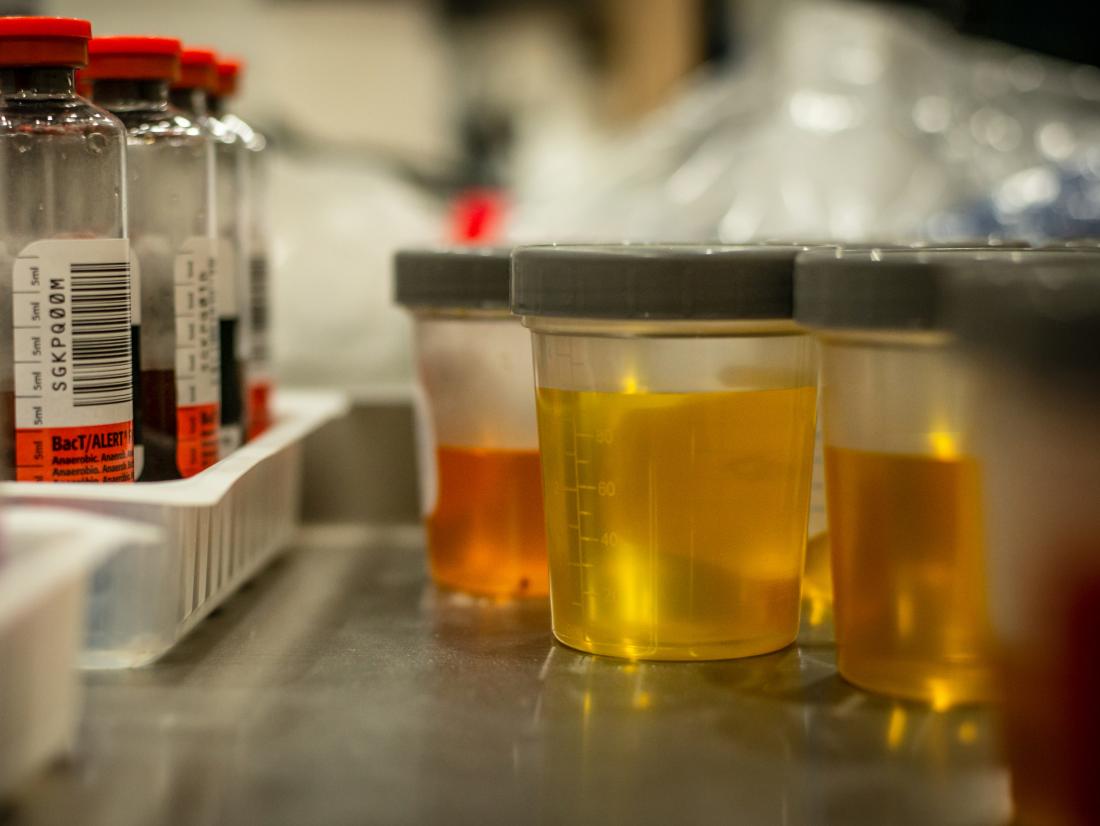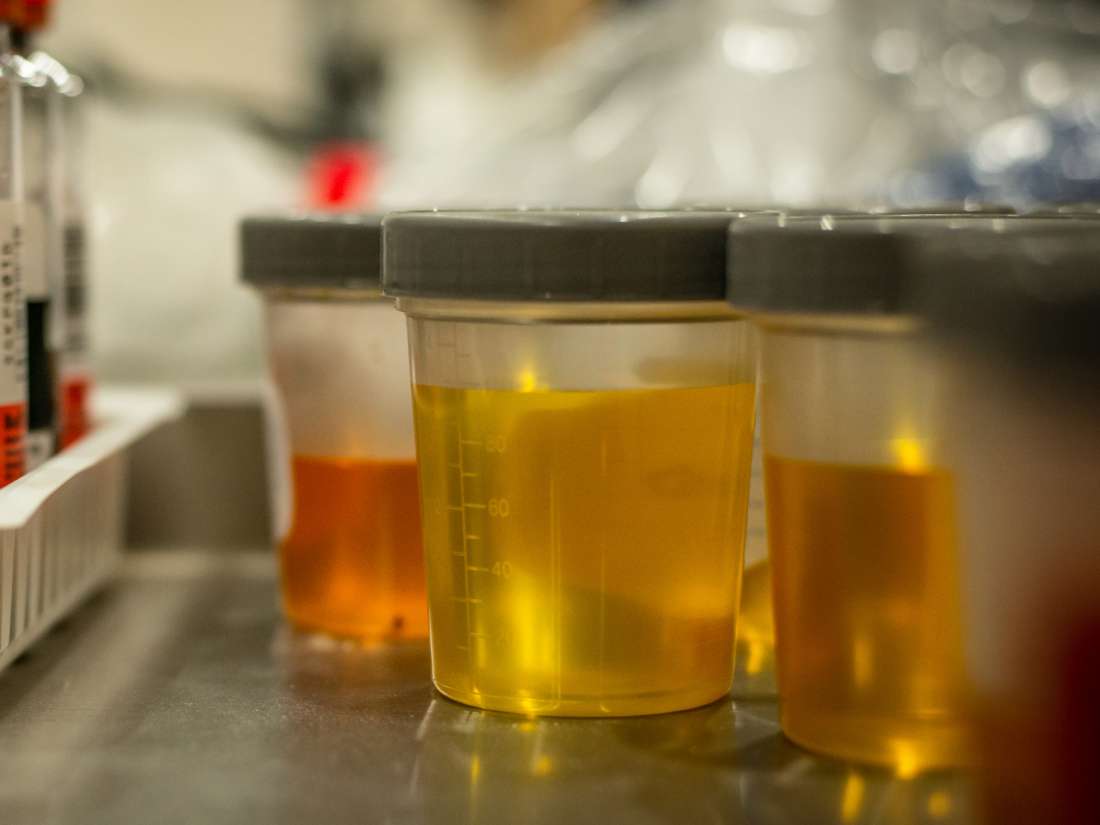It is a standard test that healthcare professionals may use in a variety of settings and situations.
A urinalysis is sometimes part of a routine health examination, but it may also aid diagnosis when a person is having bothersome symptoms. It is also common for a person to take a urine test as a precaution before surgery.
Keep reading for more information on urinalysis and what the results can indicate.
What is a urinalysis?

A urinalysis involves checking the appearance, color, and odor of urine.
A urinalysis tests a person’s urine for signs of disease, infection, or other issues. The test involves the examination of different aspects of the urine, including:
- appearance (cloudy or clear)
- color (dark, light, or colorless)
- odor
- acidity (pH levels)
- the presence of bacteria or viruses
- whether it contains blood, protein, ketones, bilirubin, or glucose
- the presence of casts (tube-shaped proteins), cells, or crystals
The urine’s appearance can help a doctor determine whether a person has certain health conditions.
For example, cloudy urine could signify a urinary tract infection, while excess glucose could indicate that a person has diabetes. Protein in the urine could be a sign of kidney disease.
What does a urinalysis test for?
A doctor may suggest a urinalysis for one of several reasons.
They may perform the test as part of a routine checkup in the following circumstances:
- before surgery
- during pregnancy
- as part of a routine medical examination
- during hospital admission to check for liver or kidney disease
- to check for diabetes
In other cases, a doctor may perform a urinalysis to diagnose a medical condition. They may be looking for signs of a urinary tract infection (UTI) or kidney infection.
They may use the test for diagnosis if the person has:
- pain in the lower back
- trouble urinating
- pain during urination
- blood in the urine
- abdominal pain
- other unusual urinary symptoms
Once they have given someone the correct diagnosis, the doctor may use subsequent urine tests to monitor the condition.
For example, they may recommend another urinalysis if a person has a UTI or kidney infection. They would use this to make sure that the infection has cleared or to check whether different antibiotics are necessary.
Other uses

A doctor may suggest a urinalysis to confirm a pregnancy.
Although a urinalysis typically tests for diseases and infections, a doctor may also use it for other purposes, such as drug screening or confirming a pregnancy.
In both of these cases, the urinalysis will test for additional substances that a typical test does not include.
For example, when testing for pregnancy, a doctor will look for the presence of the human chorionic gonadotropin (hCG) hormone in the urine. Checking hCG levels is not part of a regular urinalysis.
When a person undergoes a drug screening, the urinalysis test will detect the presence of certain drugs or their metabolic products.
Preparation and procedure
If a person is only getting a urinalysis, it is unlikely that they will need to prepare in any way. However, if part of their exam and testing involves blood work, they may need to fast for several hours before their appointment.
In some cases, a doctor may ask a person to take the urine sample when they first get up in the morning. In this case, they would provide the individual with a sample cup to use at home.
It can help to drink plenty of water before the test and avoid using the toilet immediately beforehand.
A doctor will often request a clean catch sample, which means that a person will need to wait until after their initial flow to start collecting the urine. The aim is to prevent any bacteria from the penis or vagina from getting into the sample.
To perform a clean catch, a person will:
- clean the genital area with a sterile wipe
- start urinating in the toilet
- halt the stream momentarily
- hold the container under the stream and begin peeing again
- collect at least 1 to 2 ounces of urine
- remove the container and finish going into the toilet
- bring the sample to the doctor within 60 minutes or refrigerate it if necessary
In some cases, a doctor may need to insert a catheter into the urinary tract opening. The doctor will use the catheter to collect urine directly from the bladder.
What do the results mean?
A urinalysis evaluates urine in three main ways: visual, microscopic exam, and dipstick test.
Visual examination
Most healthy people have clean, nearly clear urine. Darker colors may indicate dehydration or other issues.
A person who is fighting an infection may have cloudy urine. The urine may also have a bad smell. If the urine is red or brown, this may indicate that it contains blood.
Microscopic exam
Another part of the examination involves viewing several drops of urine under the microscope. The doctor will look for signs of any of the following:
- bacteria
- yeast
- red blood cells
- white blood cells
- crystals
- casts
The presence of these substances could suggest several different conditions or health problems, including:
- kidney stones or other problems relating to the excretory system
- infections
- a blood disorder
Dipstick test
A dipstick test involves placing a thin strip into the urine sample. The strip has several different chemicals on it that react with different urinary abnormalities. How the test strip reacts can help a doctor make a diagnosis.
Healthcare professionals often use the dipstick test to check for the following:
- signs of infection, such as nitrates
- protein levels, which could be indicative of a kidney issue
- urine concentration, which can show dehydration
- higher pH levels, which may signify a kidney or urinary disorder
- blood in the urine, which is a sign of kidney infections, urinary tract issues, or (rarely) cancer
- glucose or ketone levels, which could indicate diabetes
Next steps

A doctor may prescribe UTI medication if urine is cloudy or has a foul smell.
The results of the urinalysis will help a doctor decide whether a person needs medication, further testing, or monitoring.
Examples of this include:
- If the urine is cloudy, has a foul odor, and contains bacteria, a doctor will usually prescribe medication for a UTI.
- If blood is present, a doctor may order additional testing to determine the underlying cause.
- If the test finds abnormally high levels of glucose or ketones, a doctor is likely to order further tests for diabetes.
Summary
A urinalysis is a quick, noninvasive test that requires no special preparation. In most cases, it is easy to perform.
A doctor may use the test as part of a routine check or for a more specific reason, such as to look for underlying conditions or infections, to confirm a pregnancy, or to check for drug use.
A person should follow their doctor’s instructions when taking the test to get a valid sample.
